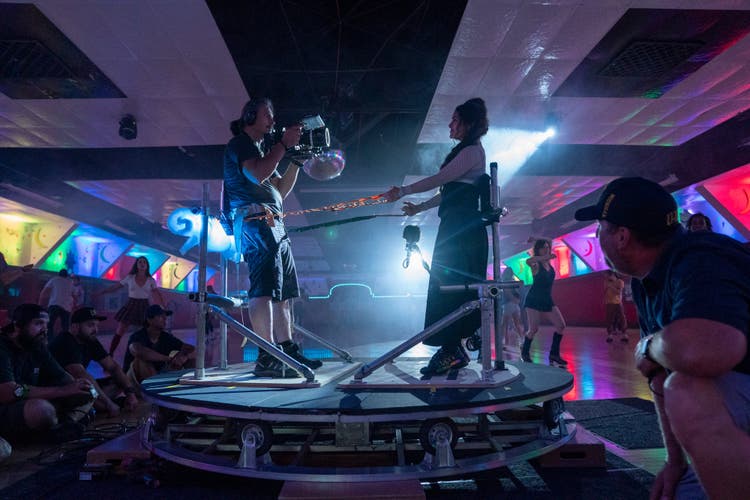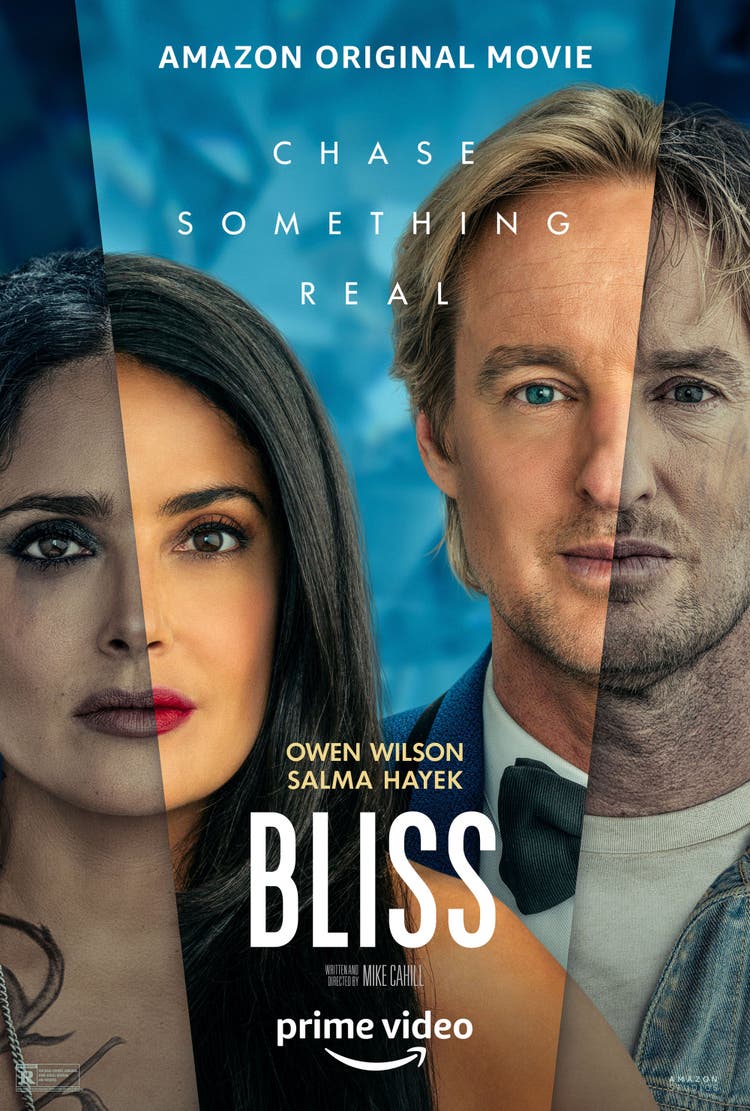Creating the trippy state of Amazon Prime’s Bliss
Bliss editor Troy Tataki discusses his workflow on the Amazon Prime film starring Owen Wilson and Salma Hayek.

Bliss, starring Owen Wilson and Salma Hayek, takes audiences down a mind-bending journey as it explores themes of love, addiction, and — as the film’s title states — the meaning of bliss. Part drama, part sci-fi, the filmmakers created a visually stunning piece despite facing challenges behind-the-scenes when production temporarily had to shut down due to COVID-19.
Editor Troy Takaki takes us through his editing process and shares his advice for aspiring filmmakers below:
How and where did you first learn to edit?
I went to San Francisco State planning to major in Journalism and took a General Education course, “Super 8 Filmmaking.” So, the first time I edited was on Super-8 film with a little, tiny splicer. I eventually changed my major to Film Production and learned to edit 16mm on flatbeds and VHS on tape to tape.
How do you begin a project/set up your workspace?
I always start from scratch — new settings every time. I make folders for dailies, scenes, cuts, etc. and put projects in them. Using the new version with a shared master project was very helpful for this. As far as my office workspace, I try to decorate it as early as possible. I want to have pictures of my family on my desk and on the walls.
Tell us about a favorite scene or moment from this project and why it stands out to you.
My favorite scene in Bliss is the scene at the end when Greg and Isabel are surrounded by the police. It is a long, complicated scene. The two characters go through a variety of emotions and changes. We also played around with the moment that the daughter arrives in the scene. In the script she arrives much earlier and when she calls out to them, they do not hear her at all. During the editing process the audience wanted there to be more interaction between the daughter and Greg. We moved the time that she arrives and the time that she gets to the overpass later. Then we manipulated the footage so that it looks like they hear her when she calls out. In the final version this is what makes Isabel decide to let Greg stay in the Ugly World. It is fun when you are able to change a scene through editing.
What were some specific post-production challenges you faced that were unique to your project? How did you go about solving them?
The most unique issue was dealing with COVID-19. When we shut down in February, we copied everything on an external drive. Three months later when we started up again, we cloned that drive. I was in LA and my assistant editor was in New York. We ended up just passing projects back and forth using Dropbox. It worked great.
What Adobe tools did you use on this project and why did you originally choose them? Why were they the best choice for this project?
We cut on Premiere Pro using a new build where we could have a shared master project. This worked great for us. We used a Nexus to hold the media at Harbor. It was the first time that I had used shared drives on Premiere Pro and was very happy with how well it worked. We also used After Effectsand Photoshop. It was very convenient to be able to stay in the Adobe world for all our work.
What do you like about Premiere Pro, and/or any of the other tools you used?
When we used After Effects with Premiere Pro, the assistant editor, Jim Chaliz, would often do the work right in the timeline. I thought that was super cool. The director would also do visual effects using After Effects, but he would use After Effects as a stand alone program and then ship us exports. Both ways worked.
What’s your hidden gem/favorite workflow hack in Adobe Creative Cloud?
There might be one that we used and I didn’t even know it was a hack. That is one of the great features of Adobe. Everyone’s workflow is slightly different. The programs are very flexible. Do I import clips or drag them into a project? It is up to the editor. Does my assistant editor step into After Effects directly in the timeline or use After Effects then import the VFX clip? We did both.
Who is your creative inspiration and why?
All of the people that I mentor are my creative inspirations. Hanging out and working with young editors that are fun, creative hardworking people inspires me. I often work on side projects with my friends and mentees. Four friends and I are about to start a documentary about high-speed downhill skateboarding.
What’s the toughest thing you’ve had to face in your career and how did you overcome it? What advice do you have for aspiring filmmakers or content creators?
There were two times that I struggled in my career. The first was the beginning. I did not know anyone in Hollywood, and I had a very hard time getting my first job. The second time was when I started cutting features after years cutting television. Moving from one medium to another is tough. You do not know a lot of people in the new medium and therefore it is hard to get jobs. I struggled through these times. However, I knew there was a light at the end of the tunnel. I always tell people just starting out that getting those first couple of jobs are the hardest. Once you have a few under your belt (and have done a fantastic job), things get easier.
Share a photo of where you work. What’s your favorite thing about your workspace and why?

Photo credit: Troy Tataki.
This is a picture of my new work-from-home office. I have two editing stations. One for my movie and one for a documentary that I am cutting on the side. I feel very creative in it. I edit. I play bass. I record and edit music using Studio One by PreSonus. I listen to records. I love it.

Bliss is available to watch on Amazon Prime.